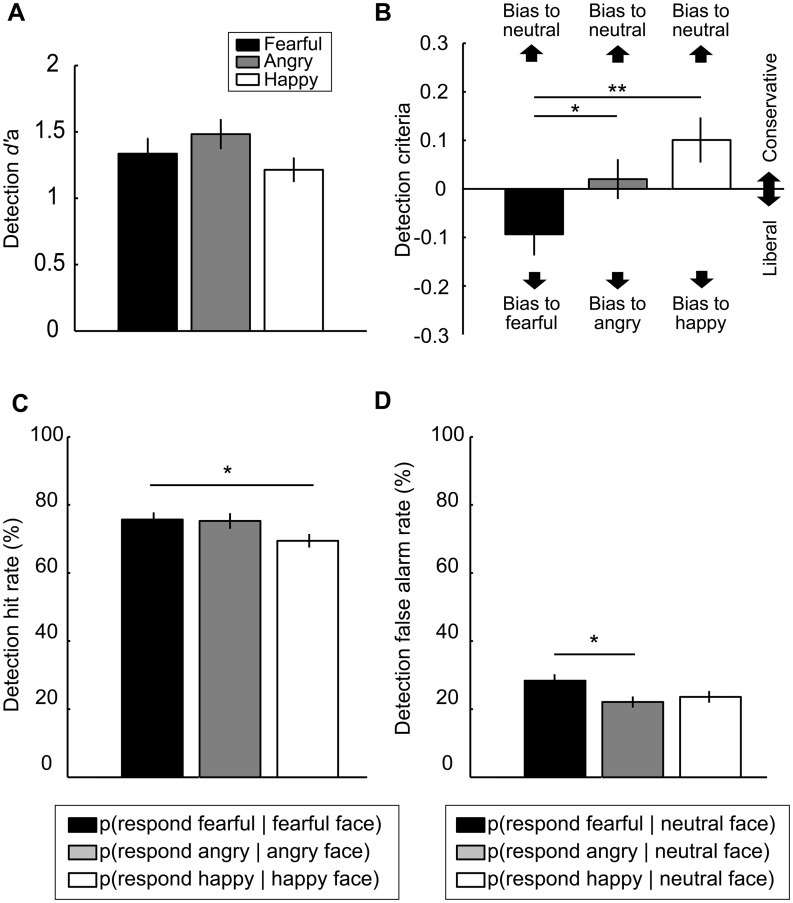Fig. 2.
Results from Detection Tasks. (A) Detection d’a was similar across the three Detection Tasks (fearful, angry and happy). (B) Criteria for detecting a fearful face was significantly more liberal (i.e. smaller value) than criteria for detecting an angry or happy face. (C) Hit rate was higher when detecting a fearful than a happy face. (D) FAR was significantly higher when detecting a fearful face than an angry face. (**P < 0.01, *P < 0.05).

